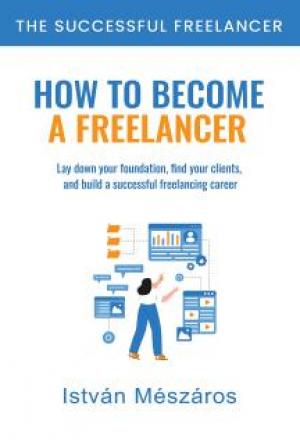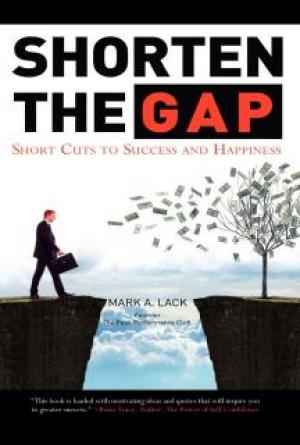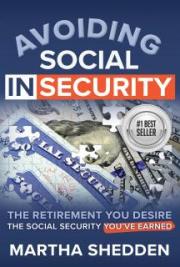77
just throw it at them. 9 times out of 10, if you’ve read the situation and your relationship correctly, the other person will say “yes please”.
Think aloud—“hmmm, that’s tricky, now I wonder if…”—you can hear (and feel) that you’re firstly empathising that they have an issue or something tricky going on ie, they’re not an idiot—and saying “I wonder if” is a pensive, non-confrontational way of offering your thought or suggestion.
As with all of the 3 ideas above, avoiding the ‘should’ word once you start with these phrases is crucial. Remember, by offering your thoughts in a less fixed way, you leave the other person open to taking on what you think but without your judgement (intentional or otherwise) behind it.
So, can I make a suggestion here? Try these phrases on for size the next time you feel yourself about to say “wel , you should” or “oh, it’s obvious, what you should do is…” You’ll notice the difference in how easily the other person/s take on what you think and if they ignore you then at least they know you contributed your thoughts. As is always the case—they have two choices. Take it. Or leave it. I bet they’ll take it more often than not, if you don’t ‘should’ on them.
The Savvy & Influential Communicator’s Starter Kit © 2006–2011 Kay White | wayforwardsolutions.com
78

Do You Know How Valuable You Are?
Owning the value of the difference you make.
That expression ‘talk is cheap’ is a powerful one. The idea that words mean less than actions was the intention of this expression but in actual fact, talk can be expensive, it can be valuable, it can be discounted and it can also be cheap.
It depends on the words you use and the value you attach to yourself, your subject and the value you attach to what you do, as you talk about it.
It’s one of the big dilemmas people face when asking for a salary raise, tel ing a client the investment to work with you, going for a promotion, preparing for an interview. Understanding and owning their value. That word value: ‘the regard that something is held to deserve; the importance or preciousness of something’.
How do you describe the ‘importance or preciousness’ of what you do when you’re discussing your role or what you actual y do in your business?
Do you talk about your day-to-day actions for example, how many people you contact, how many cal s you make, how many emails you send? Or, do you
The Savvy & Influential Communicator’s Starter Kit © 2006–2011 Kay White | wayforwardsolutions.com
79
talk about the difference you make, the importance or preciousness of what you do and—crucial y—what ‘what you do’ does? That’s where the magic is.
That’s where the value is. It’s not about what you do—the value is found in the outcome, the result of what you do.
OK, so here are a few quick and dirty examples of the difference between what you do and what it does—it’s easy to spot where the value is:
• Do you “manage a team of 30 people in an energy company” or do you
“lead a team of 30 people who save £/$ mil ions in wasted energy for our customers”?
• Do you “make hundreds of cal s a week trying to attract new customers” or do you “save our company £/$ thousands in marketing by speaking to potential customers and making sure they’re a fit for our business”?
• Do you “make sure all our clients get updated information about what we do” or do you “build relationships with our clients which mean they keep doing business with us”?
The Savvy & Influential Communicator’s Starter Kit © 2006–2011 Kay White | wayforwardsolutions.com
80
• Do you “own a consultancy business servicing the insurance industry” or do you “save the insurance industry £/$ hundreds of thousands by taking on their risk servicing needs”?
• Do you “do all the admin needs of busy entrepreneurs” or do you “enable busy entrepreneurs to focus on the business of their businesses whilst I cover all their day-to-day admin needs”?
And, it’s the difference that makes the difference if you’re promoting yourself, your business, your work—it’s about the value or worth attached to what you actual y do. So let’s make sure we talk about it—talk is valuable.
The Savvy & Influential Communicator’s Starter Kit © 2006–2011 Kay White | wayforwardsolutions.com
81

How to Get Your Emails Opened
Grab them by the eyeballs!
Which email would you rather open first ‘More Bad News’ or ‘Quick Update on XYZ for You’? What about ‘Tax Time Again’ or ‘Ways to Save You Money’?
Which is more persuasive, more influential? You know of course. So do I.
Emailing. It’s such a key piece in our day-to-day lives. We fire a quick email response off or “shoot from the fingertip” and it’s so easy to forget that we’re not top of the list for the person receiving it. They, like us, have loads of things clamouring for their attention. So how do we stay on their radar—how do we help them to help us by opening our messages and acting on them?
First off, by grabbing them ‘by the eyebal s’ and making our email title interesting and compelling.
‘Quick question’ is a great one. If it is a quick question, say it is. Put it in the title.
Another one is ‘You’ll know the answer to this one’. People love to know that you think they’ll know and, in general, we all like to help each other.
The Savvy & Influential Communicator’s Starter Kit © 2006–2011 Kay White | wayforwardsolutions.com
82
‘Just found this out’—if you have, say it in the title. New information is always interesting and if you have some, say so.
‘Only 2 days to go’—if there’s a time constraint or deadline you’re all working on, put it out there in the title.
‘An opportunity for you’—again, if it is, say so. You know yourself you’re more likely to open this one than if it was titled ‘Learning and Development Plans’. Blah.
Working with clients on how to be more engaging, how to grab and keep attention, this is such a key piece. You may have the hottest news, the greatest opportunity, the most important instruction but if your email is scanned along with the hundreds of others and left until later—or never—then, so what? Some people don’t even put a title in the subject line and that’s close to asking to be ignored.
So how do you decide on the title? By stopping for a second and considering what will compel or attract the person on the receiving end of your message. Consider what your reader wants or what they want to avoid.
The Savvy & Influential Communicator’s Starter Kit © 2006–2011 Kay White | wayforwardsolutions.com
83
Email is an amazing tool, so useful, simple and helps us keep in touch, get information across the world in a second. It’s also a great way to real y upset and confuse people. The language you use, the layout, the sign off, all these pieces are key to getting your message across in a way that works for you, that helps you to be understood and gets you the response or reaction you want.
The first step is to get your email opened.
The Savvy & Influential Communicator’s Starter Kit © 2006–2011 Kay White | wayforwardsolutions.com
84

How to—and How Not To—Connect and Compel As You Write Think about how you write. Think about how you think about other people as you write—if you think about other people as you write?
It’s one of the easiest things to do—just quickly type or write what you ‘think’
needs to be said and give a ‘tip of your fingertip’ response and assume that the other person/s will work it out. Well they may—and they may also get confused, upset, hurt or just ignore your message.
As successful business people, everyday we’re writing—emails / promotional material / website updates / reports / executive summaries / slides / letters.
I’ve noticed something that real y jumps out and it’s something you can easily take notice of as you write. People think that because they’re writing something it has to be written in a more formal, often ‘wooden’ style just because it’s in writing. Well it does—and it doesn’t. If you want to be persuasive, to get people to respond to you and your message, you need to
‘speak’ to the reader in your writing. It’s about getting inside their heads in fact.
The Savvy & Influential Communicator’s Starter Kit © 2006–2011 Kay White | wayforwardsolutions.com
85
Context is everything—most of the things we send out day-to-day can be written in a style closer to how you speak. Now you may speak in a “To Whom It May Concern” and “Notwithstanding the aforementioned” kind-of way. Well good luck if you do. I also understand that we still need to be respectful and make sure all the ‘meaty’ information is in there.
Most of the time, if you write letters, emails, website and marketing documents in this style then you’ve lost the reader at ‘Hel o—or, if that’s your style, then you’ve lost them at “To Whom It May Concern”.
Something happens when someone starts to write, that often sends them in to using ‘you are’ instead of ‘you’re” and ‘we’re’ becomes ‘we are’—it becomes more formal and less compel ing because of it. Also, the crucial connecting words of you, your, our, suddenly turn into me, my, I, us and ‘we’. The readers feel excluded or talked-down-to or bored (or all three!) I put it to you, if you can hold a conversation, if you can get your point across as you speak, chat—then you can write in the same way, there’s a style you have that’s yours and that’s how you can write. It is far more compel ing to your reader than all the ‘stuffy’ stuff.
The Savvy & Influential Communicator’s Starter Kit © 2006–2011 Kay White | wayforwardsolutions.com
86
How can you do this easily? Here’s how:
The great investor Warren Buffet of Berkshire Hathaway is renowned (apart from his bil ions of dol ars) for putting together Annual Reports for his company investors which are easy to read and easy to understand.
As he says himself, there has to be a formal layout in certain sections but in the parts where he tel s the reader about developments, he writes as if he’s speaking to his sisters. He says they’re intel igent but are no experts in finance or accounting—“I don’t need to be Shakespeare; I must, though, have a sincere desire to inform”.
• Who can you use in your head to speak to as you write? A client you know wel , a friend of yours who’s interested in what you do, your partner or sibling? Just write it out as if you were chatting to them so you get it out of your head, then you can tweak and adjust to make sure you’ve got your point across. The key is to get it out of your head in a conversational way first.
• Think about what you’d want to read and the way you’d like to read it as if you were on the receiving end—what’s the difference?
The Savvy & Influential Communicator’s Starter Kit © 2006–2011 Kay White | wayforwardsolutions.com
87
• Watch out for too many I, I, me, my—notice how you can flip them and make them your, you, you’re, our. It’s far more engaging to read and it helps you get into that crucial groove of thinking about the other person and what it is they want. Less about you, more about them.
• Notice how you’re drawn in to certain people’s writing or companies’
websites and the effects they have on you; writing more like you speak and less like a competitor for the Formal Writing Trials, will mean more people read and connect with what you write and, the crucial bit, respond to you and what you write. Write on.
RSVP, the French expression, Repondez s’il vous plait, meaning “Reply if you please”.
Wel , to get someone to respond is to get them engaged and to get them engaged is to speak to them about themselves. Remember, there’s WII FM, that radio station—What’s In it For Me? The wavelength everyone’s natural y tuned in to. Tune in to that and then write as you’d speak. Over and out!
The Savvy & Influential Communicator’s Starter Kit © 2006–2011 Kay White | wayforwardsolutions.com
88

What’s Your “Unfair” Advantage?
(and do you even know about it, let alone, are you letting it help you?) Talking about turning lemons into lemonade, this was a great question asked by my American friend and col eague, Star Ladin, of www.starmarketingmedia.
com. As a branding expert Star is always looking for, and thinking about, your special edge/gift/angle for your business and then how this links with you, your business and product.
Working with people who want to be seen and heard at work, this is one of the first places I start with them—“what is it about you or what has happened in your life that you’ve struggled with?” The reason I ask this question is that it’s often exactly these sorts of things that actual y make us who we are and—
if we recognise them—become an “unfair” advantage to us. People want to know a bit about you, the personal side of you. You connect so much quicker if you’re prepared to share a bit and to have your ‘Unfair’ Advantage clear As soon as I read it Star’s question, I knew what my “unfair” advantage is.
The Savvy & Influential Communicator’s Starter Kit © 2006–2011 Kay White | wayforwardsolutions.com
89
Being 6ft tall since I was 14. Growing up I was often teased and asked “what’s the weather like up there Lurch?” and “is there enough oxygen up there for you?” oh, and one of the best ones can still be “Ooooh, aren’t you tal ?”—I’d often (and still do) say “oh, thank you for tel ing me, I hadn’t noticed!” In my teens, I used to get to parties and immediately take my shoes off saying my feet hurt. In reality, I wanted to be smal er, to blend in more.
Now I recognise being tall means I’m noticed, I’m remembered and often when growing up, was assumed to be either older or wiser (or both!) than I was. My height gives me a natural presence, which, in business just as in life, helps. I had no choice; I was—and still am—6ft and the choice was always how I deal with it—what I make it mean to me.
It could have been easy to have slouched, to have tried to hide it by wearing flat shoes all the time but actual y, I real y like being tall and wear high heels when I want to—oh, and I’m married to someone a fair bit shorter than me. So what? It’s all about your perception and how you perceive your “unfair” advantage.
The Savvy & Influential Communicator’s Starter Kit © 2006–2011 Kay White | wayforwardsolutions.com
90

I’ve asked a few other people recently, just off the cuff, what they’ve struggled with and now could be their “unfair” advantage. They’ve all been able to tell me what theirs is.
• One friend—“Being Scottish—I’m remembered, I’m different and people like my accent”.
• Another—“My dyslexia’s made me be so much more creative”.
• My husband, Snowy—“My dad dying when I was so young helped me know how to look after myself and appreciate how hard my Mum worked”.
Think about your “unfair” advantage. What is it that’s shaped you and how do you al ow it to positively influence your life? If it doesn’t, how could it? What could you make it mean?
A great way to find out if you don’t instinctively know is to ask 3 different people who know you wel . Literal y ask them “what do you think is my unfair advantage” and just stop and listen to what they say. Often they’ll all come up with the same thing, my friends all did. Others often see—and appreciate—
things in us, or about us, that we don’t.
The Savvy & Influential Communicator’s Starter Kit © 2006–2011 Kay White | wayforwardsolutions.com
91
When you become clearer about this, recognising if and how you al ow it to be your “secret sauce” is a BIG part of communicating who—and how—you are, everywhere, you are.
As we all know, how you put yourself across is a key part in how others respond to you and what you’re noticed/known and remembered for. Be prepared to be personal. It’s less about ‘moaning’ about what happened in the past and more about embracing the chal enges you’ve faced and using the learning and strength you have to help you get your message across. It works. I know it does.
So, just so you go and think about it—what’s your unfair advantage, your
‘secret sauce’ if you wil , and where will you sprinkle it now?
The Savvy & Influential Communicator’s Starter Kit © 2006–2011 Kay White | wayforwardsolutions.com
92

Influencing
Skills Notes
The Savvy & Influential Communicator’s Starter Kit © 2006–2011 Kay White | wayforwardsolutions.com
93
When you real y ‘get’ how powerful you real y are when you choose your words careful y and with intention it will change your life. Now that’s a statement. It’s true though.
5
So many people never think about what they’re saying, they just say what’s been said to them, what they read in either a crappy newspaper or what was Persuasive
told to them as school. There are stock answers which people use all the time and I find it real y hard to listen to someone who is tel ing me what ‘not’ to do, Language
‘what I should do’, how dreadful things are, how crappy everyone is, what they think all the time. Eew. It’s tiring and it truly is the difference between “Yes” The Difference
to what someone says (Yes, I understand or Yes, I will or Yes, you can) and Between “Yes”
“Whatever” or “Is that the time?”
and “Whatever”
Using persuasive language, compelling words, it will rock your world and our intention here by working with this eBook together is for you to be heard and get your point across so that you can confidently go about your business.
The Savvy & Influential Communicator’s Starter Kit © 2006–2011 Kay White | wayforwardsolutions.com
94

How To Get Your Message Across with a Story
A Simple Question to Ask Yourself
Think of any film you’ve seen that grabbed you. What about a TV series you fol ow, or a book you read and re-read or share? They’ll all have grabbed your attention and kept it with a story. The story that’s threaded and woven throughout any attention-grabbing book or film is what we remember, long after the titles and credits. Stories have the power to move us and make us act. We all tell stories—to ourselves, to our friends and families and to our clients, customers and col eagues. That phrase “so what’s the story on that?”—
we want to know the story. The facts are just that, basical y a list of details or information. The story is what makes the difference, how the facts are all pul ed together and it sways people and if and how—they take on and accept your message.
When you work with clients, customers or col eagues, or when you’re simply chatting with friends we’re always looking for stories to be able to use to convey a message.
The Savvy & Influential Communicator’s Starter Kit © 2006–2011 Kay White | wayforwardsolutions.com
95
Here’s a key question to ask yourself which helps pull out a story to use. ’If you had to compare your message to something you’ve done in life, what’s it like?’
An analogy—‘a comparison between two things, typical y on the basis of their structure and for the purpose of explanation or clarification’ is a great way to start to build a story. Always ask yourself “what’s this like?” and up will come the potential for your story.
3 quick examples for you:
A career—it’s like a journey—if you know where you’re going when you start out, it’s easier to get there. If you just set off in any-old-direction, who knows where you’l end up?
Running a business—it’s like bringing up a child—it’s a creation of your very own and you invest passion and love, boundaries and rules into the relationship. You nurture it and want it to flourish and yet be independent of it sometimes too.
Preparing a presentation—it’s like putting on a show—a clear message and a purpose must be brought out quickly, the audience needs to be attracted to
The Savvy & Influential Communicator’s Starter Kit © 2006–2011 Kay White | wayforwardsolutions.com
96

that message and know what’s in it for them and they want to be entertained by you.
Using stories to describe a message, to help people understand is one of the most time-tested ways of engaging others. The facts stick and become more powerful when they’re used in a story. If you think about the audience and what you know about them, then express yourself with the “it’s like when you…” using something you know they do or experience, then you’re always going to be more engaging, memorable and influential than the person who lists a load of facts.
Think how as children we loved being told stories, ‘read me a story’ ‘tell me a story please’—if you have children they probably ask you that now and remembering being a child, you’ll have loved hearing, reading and learning stories. Why stop? In truth, if you think about it, we still love being told a story and so does everyone else too.
The Savvy & Influential Communicator’s Starter Kit © 2006–2011 Kay White | wayforwardsolutions.com
97

The Difference a Good Name Makes
(the difference that makes the difference in fact—be ignored or be heard) It’s often the difference between success and failure, or ‘yes please’ and
‘no thanks’—naming a product, naming a project, naming a team, naming whatever. Giving something a name which is compel ing, inviting, something that people either want, want to aim for or find interesting.
Advertisers and marketing specialists are constantly looking for, and listening for, words that compel, persuade, attract and interest us. You only have to think about how ads draw us in, give us the ‘why’ and the ‘what’s in it for us’ as they persuade us to buy:
• Coca Cola—the real thing;
• Adidas—right here, right now;
• Levis—Freedom to move
Multi-bil ion pound industries thrive on finding exactly the words to motivate us into action.
Think about it. Which projects in your business would you rather be a part of:
The Savvy & Influential Communicator’s Starter Kit © 2006–2011 Kay White | wayforwardsolutions.com
98
• ‘Maximising Our Income’ or ‘Cutting Spending and Costs’
• ‘OnLine to Win’ or ‘ 2011—Less Downtime’
• ‘Getting It Right’ or ‘Avoiding Mistakes’
I’m pretty sure you, like me, would want to be part of the first ones—the first ones are all “towards” driven. They give us the suggestion, the hint of what the outcome is, what we’re going or aiming for. The second ones in each case are all “away froms”, things to avoid or things to fear. Whilst “away froms” are great influencers—we all want to avoid pain in whatever form it takes—to get people to attend an event or a meeting that only speaks to their pain is far less attractive. Talk about the outcome, name it something interesting or compelling.
It reminds me of when I heard the name a client’s company had given to a special new project, designed to bring teams together at lunchtime with in-house experts sharing their knowledge over a sandwich. They cal ed it HELL. Loads of time and energy had gone into creating a special Educational Lunchtime Learning project and the company’s name began with H so apparently the boss said ‘let’s have a bit of a laugh’ and they cal ed it Project
The Savvy & Influential Communicator’s Starter Kit © 2006–2011 Kay White | wayforwardsolutions.com
99
HELL. “Who’s going to HELL at lunchtime?” or “I can’t make it today, I’m going to HELL”.
The point here is that after the initial giggle or smirk that it brought, no one wanted to go to such a meeting. Attracting people to become involved or be a c
















